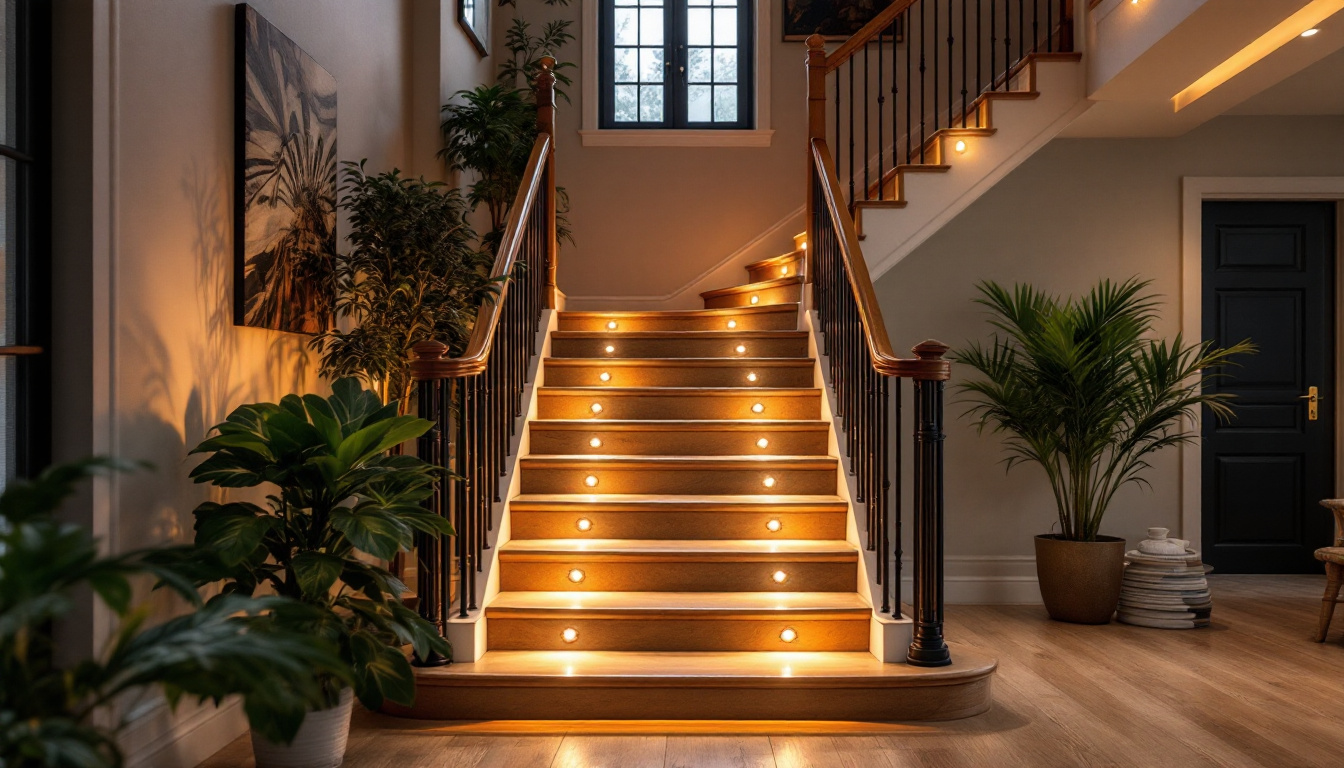
In the world of lighting design, vintage bulbs have surged in popularity, offering a unique aesthetic that blends nostalgia with modern functionality. However, lighting contractors often encounter challenges when integrating these bulbs into their projects. Understanding the common mistakes made in this area can help contractors avoid pitfalls and ensure a successful installation that meets client expectations.
Vintage bulbs, often characterized by their warm glow and unique filament designs, are not just a trend; they represent a shift towards a more personalized and atmospheric approach to lighting. These bulbs come in various shapes and sizes, including Edison-style, globe, and chandelier designs, each offering a distinct look. The resurgence of these bulbs can be attributed to a growing desire for nostalgia and authenticity in home decor, as they evoke a sense of history and craftsmanship that modern lighting often lacks.
While the charm of vintage bulbs is undeniable, they also come with specific requirements and limitations that can complicate their installation. It’s essential for lighting contractors to grasp these nuances to avoid common mistakes that could lead to unsatisfactory results. For instance, the delicate nature of vintage bulbs means they require careful handling during installation to prevent breakage, and their compatibility with dimmer switches can vary, necessitating a thorough understanding of electrical systems.
Before diving into installation, it is crucial to understand the different types of vintage bulbs available. Each type has its specifications, including wattage, voltage, and base type, which can significantly impact the overall lighting design. Additionally, vintage bulbs can be found in different color temperatures, ranging from soft amber to clear, allowing for a tailored lighting experience that complements various interior styles.
For instance, Edison bulbs are known for their exposed filaments and warm glow, making them ideal for creating a cozy atmosphere. On the other hand, globe bulbs provide a more diffused light, suitable for larger spaces. Understanding these differences can prevent mismatches in design and functionality. Moreover, chandelier-style vintage bulbs can add an elegant touch to dining areas or entryways, enhancing the overall aesthetic while providing ample illumination. The versatility of these bulbs allows homeowners to mix and match styles, creating a unique lighting scheme that reflects their personal taste.
One prevalent misconception is that vintage bulbs are interchangeable with modern LED bulbs. While both can offer energy efficiency, the light quality and aesthetic appeal differ significantly. Vintage bulbs often have a lower lumen output and a warmer color temperature, which may not be suitable for all applications. This distinction is crucial for contractors to communicate to clients, ensuring that the desired ambiance is achieved without sacrificing functionality.
Another misconception is that all vintage bulbs are created equal. In reality, the quality of vintage bulbs can vary greatly between manufacturers. Contractors should be diligent in sourcing high-quality products to ensure longevity and performance. Additionally, it is important to consider the environmental impact of vintage bulbs, as many are made with materials that may not be as eco-friendly as their modern counterparts. By educating clients on these factors, contractors can help them make informed decisions that align with their values and lighting needs. Furthermore, the growing popularity of vintage bulbs has led to a surge in counterfeit products, making it imperative for professionals to stay informed about reputable brands and certifications to avoid potential pitfalls in their projects.
Installing vintage bulbs presents unique challenges that require careful planning and execution. From electrical compatibility to fixture selection, several factors must be considered to avoid common mistakes.
One of the most significant issues lighting contractors face is ensuring that the electrical systems are compatible with vintage bulbs. Many vintage bulbs operate at lower voltages, and using them in fixtures designed for higher wattage can result in flickering or even damage to the bulb.
To mitigate this risk, contractors should verify the voltage requirements of the vintage bulbs and ensure that the fixtures are appropriately rated. Additionally, using dimmers compatible with vintage bulbs can enhance the overall lighting experience, allowing for greater control over brightness and ambiance. It’s also important to consider the wiring in older homes, as outdated electrical systems may not provide the necessary support for modern installations. Upgrading wiring or adding transformers can sometimes be necessary, adding another layer of complexity to the installation process.
The choice of fixtures plays a crucial role in the successful installation of vintage bulbs. Not all fixtures are suited for vintage bulbs, and using the wrong type can lead to aesthetic mismatches or functional issues.
For example, using a modern fixture designed for LED bulbs may not provide the same visual appeal when paired with a vintage bulb. Contractors should select fixtures that complement the vintage aesthetic, considering materials, finishes, and design elements that enhance the overall look. Moreover, the size and shape of the fixture can significantly impact the light distribution and the overall atmosphere of the space. Larger fixtures may be needed to accommodate the unique shapes of vintage bulbs, while smaller, more intricate designs can create focal points that draw the eye. Additionally, the placement of fixtures should be carefully planned to maximize the vintage bulbs’ warm glow, ensuring that the lighting not only serves a functional purpose but also contributes to the overall ambiance of the room.
Beyond the technical aspects, design considerations are vital when working with vintage bulbs. The goal is to create a cohesive and inviting atmosphere that resonates with the intended style of the space.
Vintage bulbs typically emit a warm color temperature, often around 2200K to 2700K. This warmth can create a cozy environment but may not provide sufficient brightness for all spaces. Contractors must assess the functional lighting needs of the area while maintaining the desired aesthetic.
In some cases, it may be necessary to supplement vintage bulbs with additional lighting sources to achieve the desired brightness without compromising the overall design. Layering different types of lighting can create depth and enhance the vintage appeal.
Proper placement and spacing of vintage bulbs are essential for achieving the best visual impact. Overcrowding fixtures can lead to harsh lighting and diminish the warm glow that vintage bulbs are known for.
Contractors should consider the scale of the space and the intended use when determining the placement of vintage bulbs. For instance, using multiple vintage bulbs in a dining area can create an intimate setting, while a single bulb may suffice in a hallway or accent area.
Maintaining vintage bulbs is another critical aspect that lighting contractors often overlook. While these bulbs are designed to last, their longevity can be affected by various factors, including usage patterns and environmental conditions.
Regular cleaning is essential to keep vintage bulbs looking their best. Dust and grime can accumulate on the surface, dulling the light output and diminishing the overall aesthetic appeal. Contractors should advise clients on the best cleaning practices, such as using a soft, dry cloth to gently wipe the bulbs.
Additionally, contractors should inform clients about the importance of handling vintage bulbs with care. The delicate filaments can be easily damaged, so using gloves during installation and maintenance can help prevent breakage.
As vintage bulbs age, they may need to be replaced to maintain the desired lighting quality. Contractors should educate clients on the signs of aging, such as flickering or dimming, and the importance of replacing bulbs promptly to avoid compromising the overall lighting design.
Furthermore, as technology advances, contractors may want to explore upgraded versions of vintage bulbs that offer improved energy efficiency without sacrificing aesthetics. This can provide clients with a sustainable option that aligns with modern lighting trends.
Effective communication with clients is vital throughout the lighting installation process. Educating clients about vintage bulbs can help set realistic expectations and ensure satisfaction with the final results.
Clients may have specific visions for their spaces, and it is crucial for contractors to guide them in understanding the limitations and possibilities of vintage bulbs. Discussing factors such as brightness, color temperature, and fixture compatibility can help clients make informed decisions.
By setting realistic expectations, contractors can prevent misunderstandings and ensure that clients are delighted with the final outcome. This proactive approach fosters trust and strengthens the contractor-client relationship.
Providing clients with resources, such as product specifications and care instructions, can empower them to maintain their vintage bulbs effectively. Consider creating a simple guide that outlines key information about the bulbs, including their lifespan, cleaning tips, and replacement options.
Additionally, contractors can recommend reputable suppliers for vintage bulbs, ensuring that clients have access to high-quality products that align with their design vision.
Incorporating vintage bulbs into lighting designs can elevate a space and create a warm, inviting atmosphere. However, lighting contractors must navigate various challenges to avoid common mistakes that could undermine the project’s success.
By understanding the unique characteristics of vintage bulbs, addressing installation challenges, considering design elements, and maintaining open communication with clients, contractors can achieve outstanding results that meet and exceed expectations. Embracing the charm of vintage bulbs while being mindful of potential pitfalls will ultimately lead to a more satisfying experience for both contractors and clients alike.
Ready to bring the timeless charm of vintage bulbs to your lighting projects without the common pitfalls? At LumenWholesale, we provide lighting contractors with an exceptional range of high-quality, spec-grade vintage bulbs at unbeatable wholesale prices. Our commitment to cutting out the middleman means you get the best value for your investment. With our extensive selection that meets rigorous industry standards and the convenience of free shipping on bulk orders, you can trust that your lighting solutions will shine brightly and reliably. Elevate your lighting designs today and experience the perfect blend of quality, affordability, and convenience. Visit LumenWholesale for Wholesale Lighting at the Best Value.

Discover how standard electrical outlets enhance efficiency for lighting contractors, streamlining installations and ensuring optimal performance in every project.

Discover the ultimate resources lighting contractors rely on to master the art of round light installations.

Discover essential best practices for lighting contractors working with light fixture companies.

Discover why recessed stair lights are essential for elevating your lighting projects.